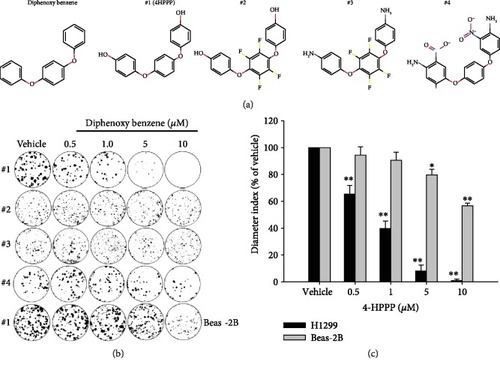Figure 1
- ID
- ZDB-FIG-200226-1
- Publication
- Liu et al., 2020 - The Phenoxyphenol Compound 4-HPPP Selectively Induces Antiproliferation Effects and Apoptosis in Human Lung Cancer Cells through Aneupolyploidization and ATR DNA Repair Signaling
- Other Figures
- All Figure Page
- Back to All Figure Page
|
The inhibitory effect of compounds on the long-term proliferation of NSCLC cells. NSCLC H1299 cells and BEAS-2B human bronchial epithelial cells were treated with the indicated concentrations (from 0.5 to 10 |

